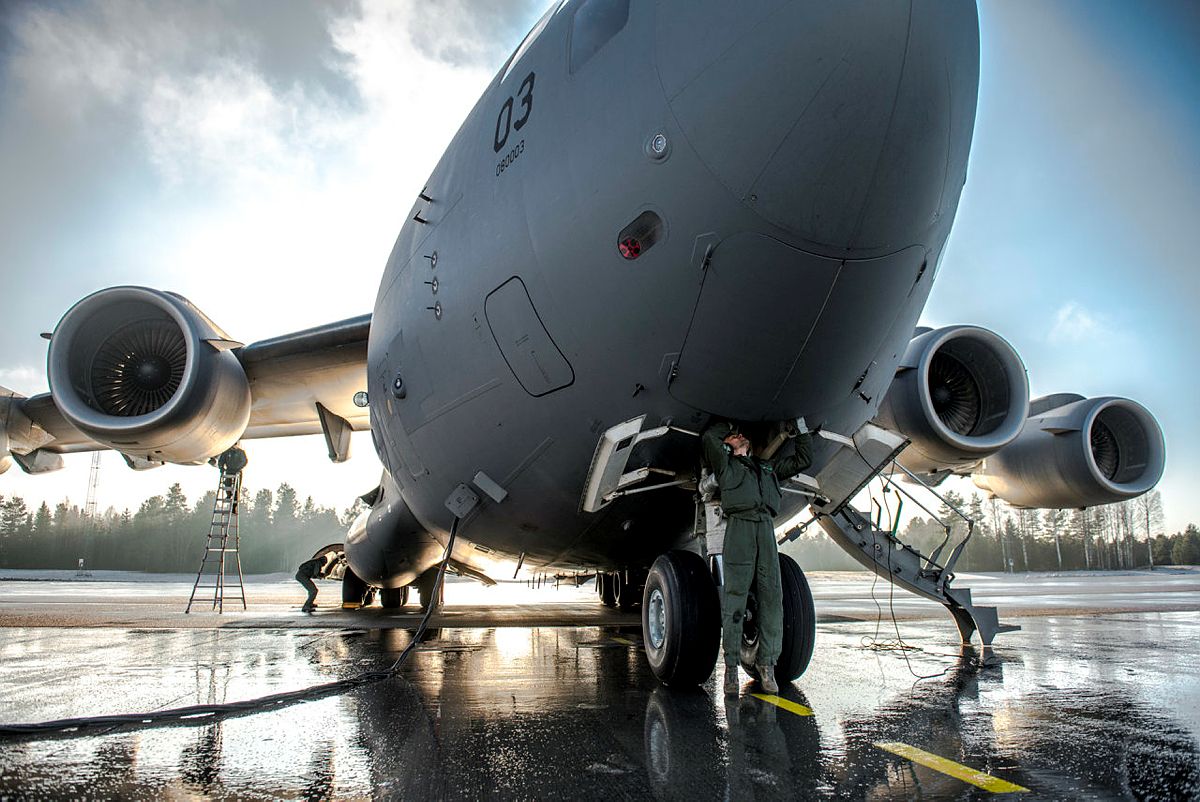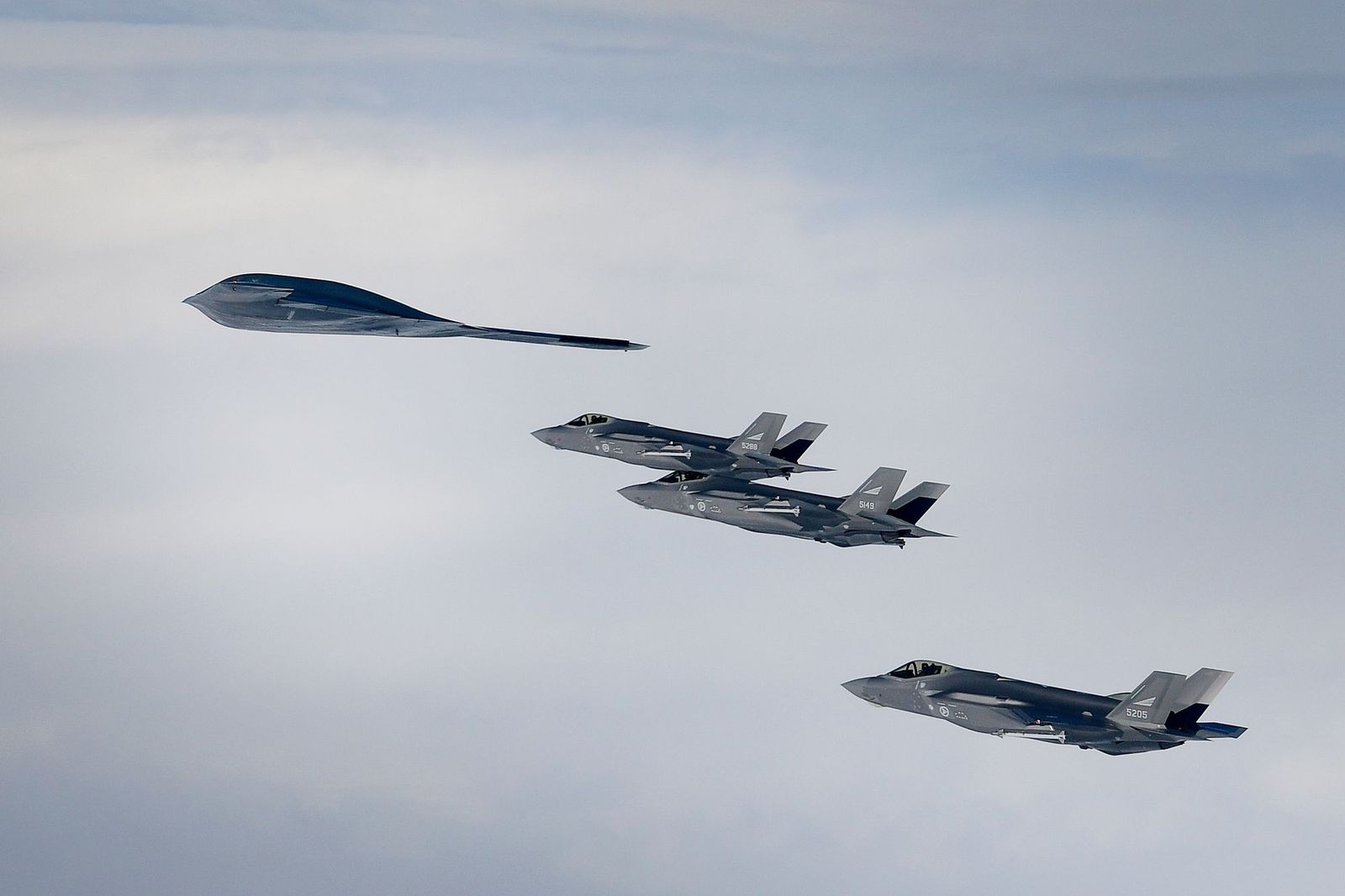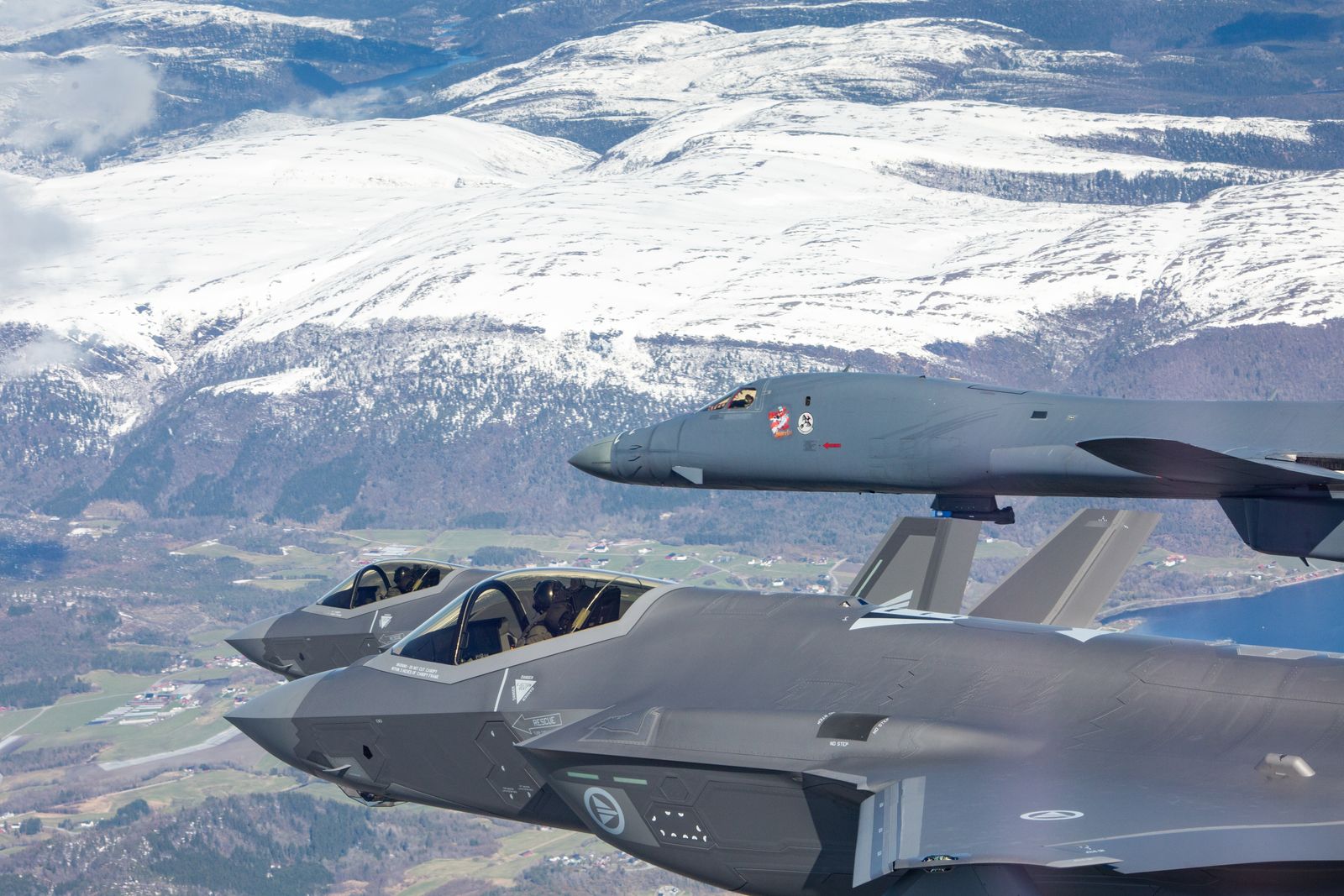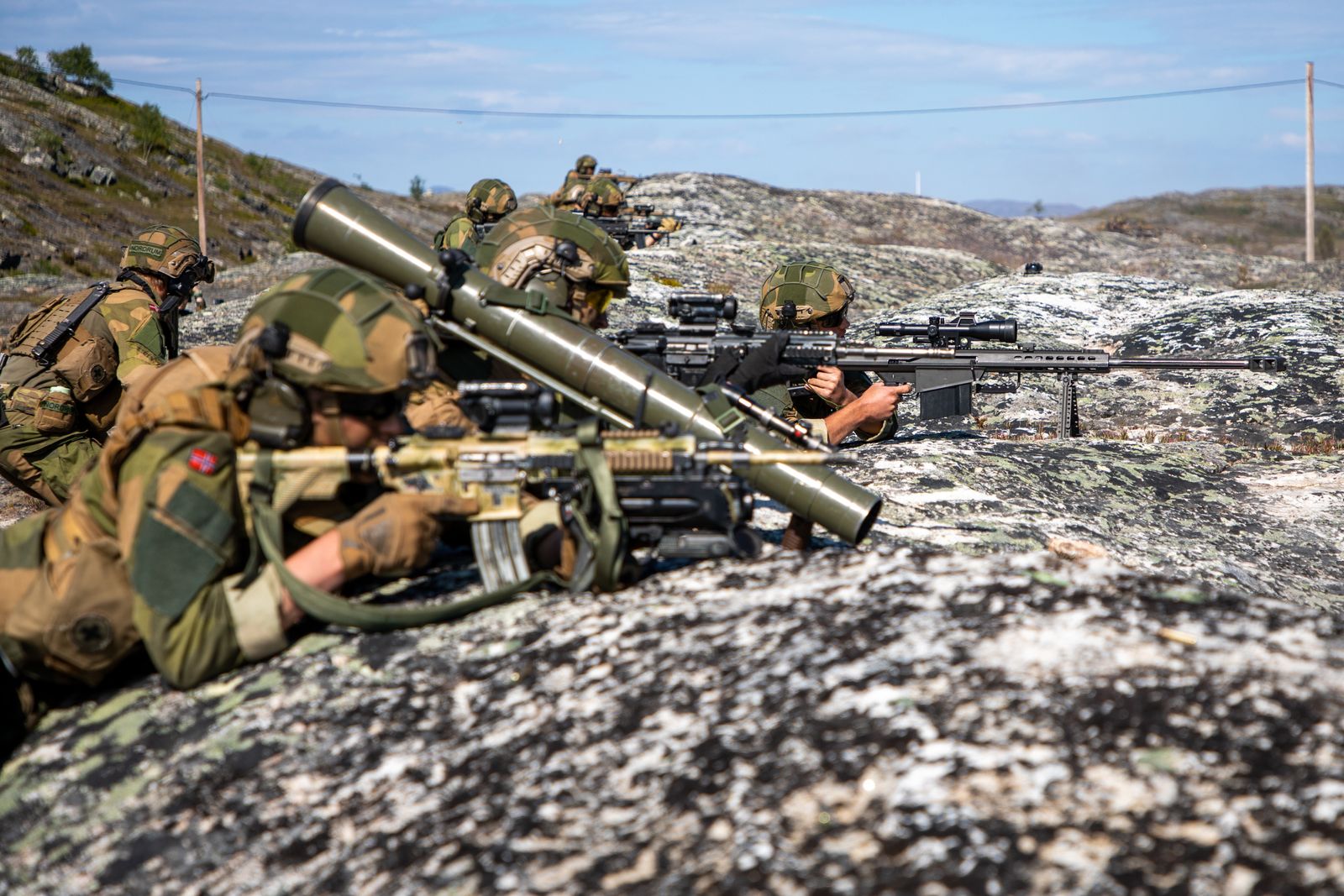Victory smiles upon those who anticipate the change in the character of war, not upon those who wait to adapt themselves after the changes occur.
– Giulio Douhet
In his 2018 National Defense Strategy, Secretary of Defense James Mattis outlined a new strategic approach for the United States’ Department of Defense (DoD). With this new approach, Mattis hoped to respond to recent changes in the strategic environment that served to shift America and others’ focus from counter-insurgency and overseas contingency operations to a revival of near-peer competition, namely with China, Russia, and Iran (Mattis, 2019, p. 1-3). In his “line of effort” titled Build a More Lethal Force, he acknowledges the changing nature of war. He writes:
[The Department of Defense] will prioritize ground, air, sea, and space forces that can deploy, survive, operate, maneuver, and regenerate in all domains while under attack. Transitioning from large, centralized, unhardened infrastructure to smaller, dispersed, resilient, adaptive basing that include active and passive defenses will also be prioritized (2018, p. 6).
The term “adaptive basing” is used to describe a more resilient alternative to “large, centralized . . . infrastructure” as well as a way to maneuver forces inside a contested environment (Mattis, 2018, p. 6), but what do adaptive basing and similar ideas specifically entail for military forces, and air forces in particular? In light of the ongoing basing debate in Norway, especially within the Luftforsvaret, the shift in the understanding of airpower concepts seems especially relevant. An eye on future concepts can help to focus and supplement discussions about Norwegian deterrence via airpower, potential reception of allied air forces, NATO air integration, and Luftforsvaret basing decisions, especially in a time of resurgent Russian military activity in the Arctic.
While emerging concepts are exciting and the advantages of new approaches should be discussed, challenges must also be clearly understood for any strategy to succeed. This paper, therefore, will attempt to identify the biggest challenges and threats to the implementation of adaptive basing concepts for western Air Forces. First, in order to frame the problem, the concept of adaptive basing and other similar strategic concepts will be defined and their development explained. Next, using John Boyd’s OODA Loop theory and the United States Marine Corps’ (USMC) maneuver warfare theory, adaptive basing and other similar concepts will be analyzed from a theoretical point of view. Challenges to the implementation of these concepts will be discussed in the following section. Additionally, considerations for NATO forces like the Norwegian Forsvaret will be explored. Lastly, the paper will conclude with a review of adaptive basing and its biggest challenges moving forward into a new strategic environment.
Development and Definition of Concepts
Throughout the development of airpower, flexibility and versatility have always been strengths. The vast expanses of sky enabled early airmen to easily outmaneuver even the most adept ground force commander and, even in those early days, missions could change underway from escort to reconnaissance to ground attack. As speed and ranges increased, so did the impact of airpower. The technical development of weapons gave even more options to air planners and air refueling made possible persistent airpower over the battlefield. Through all these developments, however, the home base has largely remained a “safe zone” for flyers. Air assets were and are considered reasonably safe when massed at home bases, under the umbrella of air defense, inside protective bunkers, and with access to ground support equipment and maintenance personnel. Advancements in aircraft design also led to increased reliance on main operating bases (MOBs) as increasingly mechanically complex aircraft required harder and smoother surfaces to takeoff and land (Halliday, 1987, p. 6).
Today however, modern weapons development, especially long-distance precision weapons and ballistic missiles, challenges the technological capabilities of air defense and the traditional safety of MOBs (Priebe, et al, 2019, p. 9). Large air bases, and even aircraft carriers, are viable targets for a technologically advanced enemy. This emerging threat, identified as early as 1987 by airpower thinkers (Halliday, 1987, p. iv), has driven a rethinking of airpower posture and is the genesis of the defensive side of adaptive basing. This defensive strategy builds further on the concept of static dispersal of aircraft, illustrated by the Swedish Air Force’s BAS 90 program during a large part of the Cold War (Dalløken, 2016). Offensively, adaptive basing also attempts to solve the anti-access area denial (A2/AD) problem presented by sophisticated integrated air defense systems (IADS) belonging to countries like China or Russia (Davis, 2014, p. 6). Adaptive basing would allow forward movement of potent forces without putting high value air assets (HVAAs) like air refueling tankers in harm’s way and in reach of enemy surface to air missiles (SAMs). Other concepts with names like “agile combat employment”, “agile combat support” (Tripp, et al, 2000), “disaggregation” (Owen, , p. 12), “tactical dispersal” (Halliday, 1987), “distributed operations” (Priebe, et al, 2019), and “untethered operations” (Brown, Spacy, & Glover, 2015), follow the same line of thinking of adaptive basing and are considered together for the purposes of this paper.
Forward arming and refueling points (FARP) are another integral concept in adaptive basing strategies. FARP can be defined as “rearming, refueling, and swapping pilots without the use of airfield infrastructure . . . benefits include strategic deterrence, crisis stability, greater range of fighter aircraft, and sustained fighter operations in an A2/AD environment” (Davis, 2014, p. 6). “Without . . . airfield infrastructure” (Davis, 2014, p. 6) in this instance can mean operating from an unprepared surface like a dry lake bed, a strip of abandoned highway, or an existing runway on an auxiliary or out-of-use airfield. FARPs can also, of course, be conducted in normal operating airfield environments. Fuel for FARP operations can be provided by ground sources, airlifted supplies, or even transferred from the support aircraft themselves to smaller strike or other platforms, but critically do not require tanker aircraft.
Theory and Doctrine
War is both timeless and ever changing. While the basic nature of war is constant, the means and methods we use evolve continuously.
– Marine Corps MCDP 1, Warfighting
If we analyze adaptive basing in light of two classic military theories, Boyd’s OODA Loop and the United States Marine Corps’ (USMC) maneuver warfare, we can see that the core truths of military strategy remain even in the challenging “anti-access area denial” (A2/AD) environment of 2020.
In Boyd’s words, “he who is willing and able to take the initiative to exploit variety, rapidity, and harmony—as basis to create as well as adapt to the more indistinct, more irregular, quicker changes of rhythm and pattern, yet shape focus and direction of effort—survives and dominates” (1986, p. 174). This idea, to increase the tempo of operations, is the core of Boyd’s OODA Loop theory. Observe, Orient, Decide, and Act are the four steps of the “loop”, and he who can complete the cycle the fastest, but not necessarily most perfect, will win the engagement. Additionally, increasing the tempo of operations results in the enemy becoming stuck in the “O-O” portion of the loop, having to constantly “observe” and “orient” to the rapidly changing tactical, or strategic, problems presented.
Adaptive basing utilizes this theory through rapid deployment, resupply, and redeployment of air assets. Take for example, the Western Pacific Theater of Operations (WPTO). In a hypothetical conflict with China, a relative few MOBs (Osan and Kunsan Air Bases in Korea, and Misawa, Yokota, and Kadena Air Bases in Japan) are potential basing options for American forces. These bases lie within reach of Chinese ballistic missiles however, and operations would likely be contested, if not denied (Davis, 2014, p. 7). Luckily, the WPTO offers over 150 additional island runways that meet the minimum requirements for forward projected fighter operations and well over 200 that could be utilized for other types of operations, like forward deployment of artillery (Davis, 2014, p. 15). A package consisting of four F-22s and one C-17, like that suggested in the “Rapid Raptor” concept, could deploy to any one of these runways at any time, receive, refuel, and rearm the fighters, and redeploy at a pace that could outperform intelligence, surveillance, reconnaissance (ISR) or targeting cycles of the Chinese (Brown, Spacy, & Glover, 2015, p. 21). The sheer amount of basing options precludes preemptive targeting of these airfields and the tempoallows flexibility for decentralized decision-makers. Chinese air defense threats would also likely push tanker orbits much farther from targets than ever before (Nordhagen, 2018, p. 21), making air refueling capabilities less effective. FARP operations and adaptive basing enable sortie regeneration without the threat to tankers. On top of that, they provide the ability to rearm between missions, something not possible with air refueling operations (Nordhagen, 2018, p. 10).
The USMC’s maneuver theory, like Boyd’s, asserts that time is the “critical factor” to warfighting (USMC, 1997, p. 85). Maneuver that happens in the physical space of the battlefield is less important than the maneuver that happens in the enemy’s decision space. Like the OODA Loop, the aim is to increase the tempo of operations and present dilemmas to the enemy in the tradition of combined arms (USMC, 1997, p. 74). In this way, room for decisions is constrained, the mental equivalent of funneling a large army into a narrow ravine to nullify their size advantage.
Adaptive basing aims to present such dilemmas to the enemy. The stealth technology of an F-22 or F-35 presents a problem to a potential adversary, but the fact that the aircraft is more or less “tethered” to a MOB or tanker serves to simplify the response. Adding agility and unpredictability to stealth assets like these transforms the problem into a dilemma. What if we apply these concepts to a potential conflict in Europe instead of the WPTO? Brown, Spacy and Glover present one such example in Untethered Operations:
A lone C-17 landed smoothly in the predawn hours at Ämari Air Base, Estonia. The C-17 was from the Heavy Airlift Wing in Pápa, Hungary. Ämari had yet to experience the devastation of a Russian air attack. The sheer number of NATO basing options made targeting all of them impossible and had so far kept Ämari safe. The cargo ramp was already lowering as the C-17 taxied to a stop and USAF Airmen piled out. The seemingly deserted base came alive as Airmen began organizing the ramp. There were aircraft maintainers, operations and intelligence personnel, and a squad of security forces. They went to work immediately, unlocking and organizing munitions, connecting fuel lines to hydrants, and setting up expeditionary defensive fighting positions. The operations and intelligence personnel set up a deployed ops center. In less than an hour, four Dutch F-16s entered the traffic pattern and landed quickly. Like the C-17, the fighters had barely come to a stop before Airmen clambered over them, helping the pilots unstrap and egress. The aircrews were hustled to the waiting intelligence officers while the aircraft were reloaded with bombs and fuel. The operations update and intel briefings would last just as long as it took the Airmen to rearm and refuel the jets. They would then depart on their next combat mission—their third of the night. In less than two hours, the F-16s were gone, and the C-17 was taxiing for takeoff. The next base was Łask in Poland where a flight of U.S. F-16s was scheduled to join them. The C-17 could do this three more times before it had to return to Ramstein and refit. NATO forces were repeating this scene all over Eastern Europe. The war is going well; Russia simply doesn’t have the capacity to fight across such a broad front (2015, p. 17).
If we update this scenario from 2015 to 2020 and replace Dutch F-16s with Norwegian F-35s, for example, we present an even more complicated dilemma to an adversary such as Russia. To further complicate, replace the airfield with a remote stretch of highway somewhere in the Estonian countryside (Nordhagen, 2018, p. 28). These dilemmas serve to “overcome the enemy by events” (USMC, 1997, p. 74) without having to physically attrit them.
Western military doctrine has responded to developments in the operational environment, and NATO has also begun the process of strategic evolution. Adaptive basing finds its position as a supporting element to the larger Multi-Domain Operations (MDO) concept. In TRADOC Pamphlet 525-3-1, the U.S. Army describes their vision for Multi-Domain Operations. Three tenets, “Calibrated Force Posture”, “Multi-Domain Formations”, and “Convergence” serve to organize the doctrine and are shown in Figure 1, below.

Adaptive basing, and other similar concepts, contribute to all three tenets, but especially so to “Calibrated Force Posture”. Namely, these concepts provide “forward presence forces”, “expeditionary forces”, “independent maneuver” and “disciplined initiative”. Up to this point, we have discussed primarily air forces utilizing the adaptive basing concept. Fighter aircraft and FARPs, especially, have served to highlight the strategy. But what about joint or multi-domain applications?
Replace the aircraft support equipment airlifted in the previous Rapid Raptor example with precision artillery pieces, for instance. Rapid forward positioning of artillery via tactical airlift to an auxiliary field presents a difficult multi-domain dilemma to a potential enemy. This is the idea behind the HIRAIN concept, which stands for HIMARS Rapid Insertion (Allen & Howard, 2019, p. 12). HIMARS, the High Mobility Artillery Rocket System, delivers quite the punch on its own via precision artillery and rocket strikes, but coupled with a C-130 or C-17, one has a highly mobile, highly precise strike platform which requires very little in the way of external support (Allen & Howard, 2019, p. 12). Space-enabled targeting for the artillery and cyber effects could potentially converge four domains simultaneously to maximize effects against weak points in the enemy’s defense. Rapid redeployment preserves the tempo of the operation and ensures maneuver inside the enemy’s OODA loop decision cycle. Interestingly enough, none of these examples require development of new technologies.
Multi-Domain Operations builds on the lessons of Boyd and USMC strategists but has important prerequisites as well. Mission command and the decentralized decision-making process it relies on must be firmly ensconced in the force to properly execute the concept. Leaders must be empowered all the way down the chain of command to the lowest tactical level in order to ensure decisions are made with the speed required to outmaneuver the enemy. This is only one of a few challenges to adaptive basing concepts.
Challenges
As stated in the introduction, the challenges presented by adaptive basing and similar concepts are as important to understand as the advantages they bring to the table. By identifying these, doctrine, training, and exercises can be built to make the concepts more resilient in the “fog and friction” which inevitably comes with actual conflict. I have identified Command and Control (C2), Logistics, and Contested / Degraded Operations (CDO) as three major challenges to adaptive basing concepts.
Command and control (C2) is an obvious challenge to adaptive basing because of the decentralized nature of the operations. Over the years, MOBs and their C2 facilities consolidated control and resources in an effort to gain efficiency and situational awareness. This action simultaneously trained lower echelons to rely on clear guidance from above. Orders became more specific and neither risk nor authority were delegated very far down the chain of command (Priebe, et al, 2019, p. 47). In the A2/AD environment, this centralized method will not be possible, at least not for very long. Command authority will therefore have to be delegated as low as possible. Leadership concepts like Mission Command[1]support a decentralized structure like this, but will need to be practiced in earnest during peacetime and exercises in order to function smoothly during war. A high degree of trust, along with competent subordinates, is also required for Mission Command to function effectively. Additionally, mission-type orders, a more general and intent-based order system that gives the “what” and “why” for a mission but not the “how”, would likely have to replace the rigid ATO cycle that has defined air operations in the last 30 years (Priebe, et al, 2019, p. 54). Most of these challenges will be faced by airmen at the tactical level, but strategic leaders will suffer from a reduced flow of information back up the chain as well. C2 challenges will likely force decision-makers at all levels to operate with much less information than they have become accustomed to having.
Logistics is another challenge to adaptive basing. Like C2, disaggregation will decrease the efficiency of logistics that has previously been enjoyed at MOBs. This inefficiency is the price that must be paid for increased survivability and resiliency, but is still a formidable challenge to operations. In Shaping Air Mobility Forces for Future Relevance, Robert Owen also identifies an airlift capability gap as a particular logistic challenge for adaptive basing (2017, p.23). C-130s can land at most small airfields but lack sufficient cargo capability for reliable resupply, especially with long transits, which would be present in the WPTO, for example. The C-17 could provide large amounts of cargo, on the other hand, but may struggle with airfield suitability and could damage unprepared surfaces, drastically limiting the number of times they could be used (Owen, 2017, p. 20). As the number of suitable airfields in a theater decreases, so does the effectiveness of maneuver and potentially the tempoable to be sustained by friendly forces.
Contested / Degraded Operations (CDO) challenge adaptive basing concepts as well. In addition to C2 challenges that arise from the simple decentralization of operations, contested and degraded communications and command links as a result of enemy jamming, electronic attack, physical attack, or cyberattack will further challenge air planners and leadership. At the operational level, planners may be unable to provide direction because of broken lines of communication to lower echelons. These higher headquarters may even find themselves as targets, and be unable to provide C2 because of defensive postures or destruction. Lower echelons may suffer degradation of equipment or capabilities that rely on infrastructure like the Global Positioning System (GPS) or SATCOM constellations. A RAND Study titled Distributed Operations in a Contested Environment provides alternative organizational structures that would make operating in these types of environments feasible (Priebe, et al, 2019, p. 51-52), but these structures must be practiced and exercised to be effective. The adage “train as you fight” applies today as much as it has in the past.
Considerations for Allied Partners
Adaptive basing is a topic of current American interest, but has the potential to be equally relevant to allied partners. Brown, Spacy, and Glover’s untethered operations scenario (2015, p. 17), presented earlier, describes NATO forces seamlessly integrating into a European multi domain operation. This type of cooperation highlights the importance of interoperability, and reinforces the efforts made by NATO and allied partners with respect to standardization of equipment, intelligence, and operations thus far. Smooth interaction between units, no matter the country of origin, will be necessary to produce the tempo required to succeed in future conflict. NATO and partner inclusion in future adaptive basing or agile combat employment exercises should be prioritized for this reason.
Additionally, adaptive basing illustrates the criticality of support missions to endgame kinetic effects. Dispersing forces complicates logistics and support platforms become increasingly important in order to complete the kill chain which ends in kinetic effects. This further emphasizes one particular lesson learned from Operation Unified Protector and the Libya campaign—that while NATO member strike assets were capable, their effective use was heavily reliant on American support assets. Air mobility, tanker, communications, ISR, and unmanned systems provide the needed flexibility and support to enable effective airpower. With this in mind, projects like the Strategic Airlift Capability (SAC) in Papa, Hungary, the Multi Role Tanker Transport Capability (MRTT-C), combined intelligence centers, and NATO unmanned systems should not only be supported but accelerated in an effort to build up allied support mission capabilities and overall capacity.
Conclusion
As the strategic environment changes, core truths regarding warfighting remain the same. Tempo and agility are still the keys to outmaneuver the enemy’s decision-making ability and deliver decisive force where it is most effective. For air forces, adaptive basing represents one way to do this. Adaptive basing concepts align with thoughts from classic military theory. Rapidly projecting airpower, delivering kinetic effects, and quickly redeploying, enables friendly forces to “get inside the turn circle” of the enemy, as Boyd suggested, and present dilemmas like those espoused by USMC maneuver warfare, all while avoiding the emerging threats to MOBs. It also buttresses the doctrinal concepts of Multi-Domain Operations, which seem a likely future for NATO in light of hybrid warfare. Adaptive basing has its’ own unique challenges, not the least of which are Command and Control, Logistics, and Contested / Degraded Operations. These challenges though, once identified, can be mitigated through carefully constructed training, organizational structures, and leadership development. While military strategists have identified adaptive basing as promising for allied air forces, these challenges should be considered as the concepts are further developed. For Norway, an understanding of concepts like adaptive basing can also ensure that large defense investments like the F-35 are utilized to their full potential and that less visible support functions, like C2 and ISR, are advocated for in future plans.
Foto: Boeing C-17 Globemaster III fra Heavy Airlift Wing Papa på oppdrag for det Forsvaret (Olav Standal Tangen / Forsvarets forum)
[1] Mission command (oppdragsbasert ledelse) is the exercise of authority and direction by the commander using mission orders to enable disciplined initiative within the commander's intent to empower agile and adaptive leaders in the conduct of unified land operations." Army Doctrine Publication 6-0: Mission Command, U.S. Army, Washington, D.C., 2012.
References
Allen, A. & Howard, Z. (2019). Words Have Meaning – HIRAIN and LHP. Redleg Update, March/April 2019, 12-14.
Boyd, J. (1986). Patterns of Conflict. Retrieved from http://www.ausairpower.net/JRB/poc.pdf
Brown, C., Spacy, B., & Glover, C. (2015). Untethered Operations. Air & Space Power Journal, May-June 2015, 17-28.
Dalløken, P. E. (2016). Se Gripen bruke riksvegen som kampflybase. https://www.tu.no/artikler/se-gripen-bruke-riksvegen-som-kampflybase/346056
Davis, R. (2014). Forward Arming and Refueling Points for Fighter Aircraft. Air & Space Power Journal, September-October 2014, 5-28.
Halliday, J. (1987). Tactical Dispersal of Fighter Aircraft: Risk, Uncertainty and Policy Recommendations. The RAND Corporation. https://www.rand.org/pubs/notes/N2443.html
Mattis, J. (2018). National Defense Strategy, Unclassified Summary. Retrieved from https://dod.defense.gov/Portals/1/Documents/pubs/2018-National-Defense-Strategy-Summary.pdf
Nordhagen, L. (2018). A-10 Adaptive Basing Operations and Applications in Support of SOF. [Master’s thesis, Naval Postgraduate School]. Calhoun.
Norwegian Defense Research Establishment (FFI). Technological Trends and Their Impact on Defence Planning. https://publications.ffi.no/nb/item/asset/dspace:6626/20-00228.pdf
Owen, R. (2017). Shaping Air Mobility Forces for Future Relevance. Air Force Reseach Institute. https://media.defense.gov/2017/Jun/19/2001765023/-1/-1/0/AP_2017-1_OWEN_AIR_MOBILITY_FORCES.PDF
Priebe, M., Vick, A., Heim, J., & Smith, M. (2019). Distributed Operations in a Contested Environment: Implications for USAF Force Presentation. The RAND Corportation. https://www.rand.org/content/dam/rand/pubs/research_reports/RR2900/RR2959/RAND_RR2959.pdf
Tripp, R., Galway, L., Ramey, T., Amouzegar, M., & Peltz, E. (2000). Supporting Expeditionary Aerospace Forces: A Concept for Evolving the Agile Combat Support/Mobility System of the Future. The RAND Corporation. https://www.rand.org/pubs/monograph_reports/MR1179.html
United States Army. (2018). TRADOC Pamphlet 525-3-1: The US Army in Multi-Domain Operations. https://www.tradoc.army.mil/Portals/14/Documents/MDO/TP525-3-1_30Nov2018.pdf
United States Marine Corps. (1997). Marine Corps Doctrinal Publication 1, Warfighting. https://www.marines.mil/Portals/1/Publications/MCDP%201%20Warfighting.pdf







